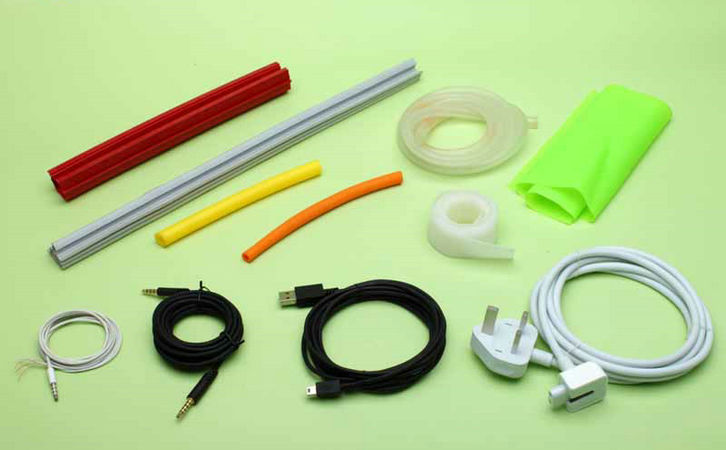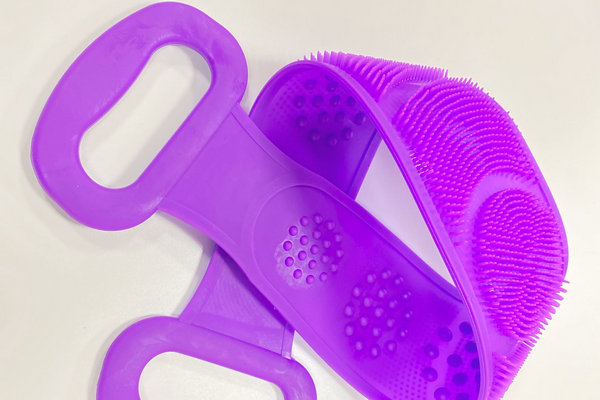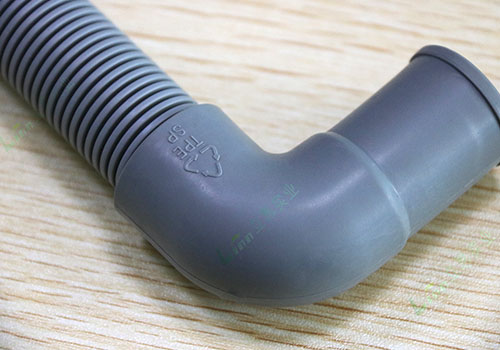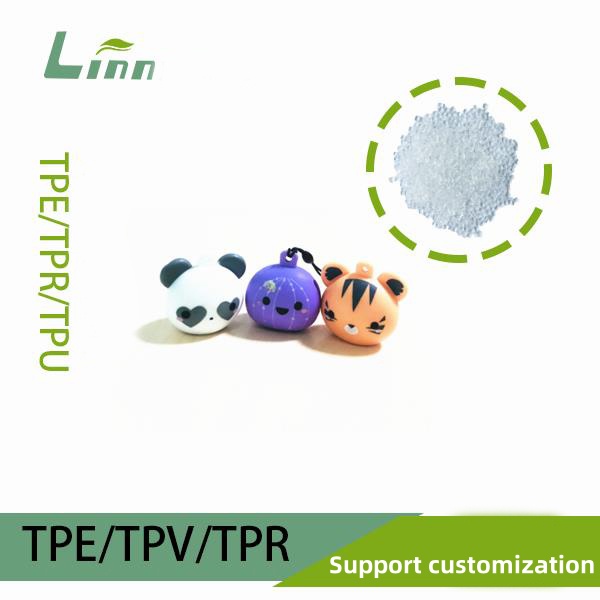As someone who has been deeply involved in the TPE (thermoplastic elastomer) processing industry for years, I understand that achieving a distinctive wave pattern effect in the secondary processing of TPE bags is both a technical challenge and a craft that requires patience and creativity. Many people encounter issues like uneven patterns, poorly designed molds, or unstable processing parameters when attempting to create wave patterns on TPE bags. Today, I’ll share my experience and industry best practices to guide you through the process of creating beautiful, durable wave patterns in TPE bag secondary processing. I hope this article helps you avoid pitfalls and achieve your design goals!

Why Choose Wave Patterns?
Wave patterns not only enhance the visual appeal of TPE bags but also increase surface friction, improving grip and feel. This makes them especially popular in applications like luggage, handbags, and outdoor gear. However, achieving clear, three-dimensional wave patterns on TPE materials involves multiple factors, including material selection, mold design, and processing techniques. Let’s break down the process step by step to understand the key considerations for each stage.
Step 1: Selecting the Right TPE Material
The properties of TPE materials directly impact the quality of wave patterns. In secondary processing, I typically focus on the following factors:
Hardness: The hardness of TPE (measured in Shore A) affects pattern clarity. Generally, TPE with a hardness of 30A to 60A is ideal for wave patterns, as it balances softness with the ability to display detailed textures.
Flowability: The melt flow index (MFI) determines how well TPE fills the mold. TPE with a higher MFI (e.g., 10-20 g/10min) is better suited for complex wave patterns.
Abrasion Resistance: Since wave patterns are often on the bag’s surface, TPE with high abrasion resistance ensures longer product durability.
In practice, I recommend collaborating with material suppliers to obtain samples for small-scale testing to confirm the material’s performance meets the wave pattern design requirements. If you’re unsure about material selection, you can refer to the ASTM D2240 standard for testing TPE hardness or consult the supplier’s material data sheet.

Step 2: Designing the Wave Pattern Mold
The mold is the cornerstone of successful wave pattern production. A well-designed mold ensures accurate pattern replication and production efficiency. Here are some insights I’ve gained from mold design:
Pattern Depth and Spacing
Wave pattern depth typically ranges from 0.5mm to 2mm. Too shallow, and the pattern looks flat; too deep, and demolding becomes difficult. Spacing should be controlled between 2mm and 5mm to achieve a balanced, three-dimensional effect without overcrowding the surface.
Mold Material
I usually opt for high-precision steel (such as P20 or 718H) for molds, as TPE requires corrosion-resistant materials at high temperatures. Steel molds also maintain pattern integrity over prolonged use.
Demolding Angle
Wave pattern molds need a proper demolding angle (recommended 1° to 3°) to prevent TPE from sticking to the mold or deforming the pattern.
Surface Treatment
The mold surface should be polished or sandblasted to ensure the wave pattern’s gloss and smoothness. For a matte finish, sandblasting is ideal; for high gloss, polishing is preferred.
In production, I advise working closely with mold designers, providing detailed wave pattern designs (preferably using CAD or SolidWorks), and conducting test runs after mold fabrication to verify pattern clarity and uniformity.

Step 3: Optimizing Secondary Processing Techniques
Secondary processing of TPE bags typically involves hot pressing, injection molding, or vacuum forming. For wave patterns, I primarily recommend the following two methods:
1. Hot Pressing
Hot pressing is a common method for wave pattern processing, ideal for small-batch or customized production. The steps are as follows:
Preheat the Mold: Heat the mold to 150°C to 180°C, depending on the TPE material’s melting point.
Place the TPE Sheet: Insert a pre-cut TPE sheet into the mold, ensuring it’s flat and wrinkle-free.
Apply Pressure: Use a hot press to apply 5-10 MPa of pressure for 10-20 seconds.
Cool and Demold: Allow the mold to cool to below 50°C before removing the molded TPE bag.
Note: During hot pressing, carefully control temperature and pressure to avoid TPE degradation from excessive heat or unclear patterns due to insufficient pressure.
2. Injection Molding
Injection molding is ideal for large-scale production, offering higher precision for wave patterns. Key parameters include:
Injection Temperature: Set between 180°C and 220°C, adjusted based on the TPE material’s melting point.
Injection Pressure: Maintain 50-100 MPa to ensure complete mold filling.
Holding Time: Typically 3-5 seconds to prevent pattern shrinkage or deformation.
Cooling Time: Allow 10-15 seconds to ensure the pattern sets properly.
During injection molding, I pay close attention to the mold’s venting design, as TPE materials can produce bubbles at high temperatures, affecting the wave pattern’s surface quality.

Step 4: Post-Processing and Quality Control
After processing, the wave pattern’s quality requires post-processing and thorough inspection:
Trimming: Remove excess flash to ensure smooth edges.
Surface Treatment: Apply a wear-resistant coating or use UV curing to enhance the pattern’s durability and gloss.
Quality Inspection: Check the pattern’s depth, uniformity, and surface for defects (e.g., bubbles or scratches).
I typically use a microscope or 3D scanner to inspect samples, ensuring the wave pattern matches the design specifications. If possible, adopt the ISO 9001 quality management system for standardized production.
Comparison Table of Common Processing Techniques
To help you choose the right method, here’s a comparison table of hot pressing and injection molding parameters:
| Technique | Application | Temperature (°C) | Pressure (MPa) | Processing Time (s) | Advantages | Disadvantages |
|---|---|---|---|---|---|---|
| Hot Pressing | Small-batch, customized | 150-180 | 5-10 | 10-20 | Simple equipment, low cost | Lower efficiency, less precise patterns |
| Injection Molding | Large-scale production | 180-220 | 50-100 | 3-15 | High precision, efficient production | High mold cost, large initial investment |
Step 5: Addressing Common Issues
During wave pattern processing, you may encounter the following issues. Here are my solutions:
Unclear Patterns
Cause: Low mold temperature or poor TPE material flowability.
Solution: Increase mold temperature by 5-10°C or switch to a TPE with higher flowability.
Surface Bubbles
Cause: Poor mold venting or excessive moisture in the material.
Solution: Optimize mold vent design and dry the TPE material (80°C for 2 hours) before processing.
Demolding Difficulties
Cause: Insufficient demolding angle or rough mold surface.
Solution: Adjust the demolding angle to above 2° or polish the mold surface.

My Real-World Experience
A few years ago, I worked on a wave pattern design for an outdoor backpack project. The client demanded deep, three-dimensional patterns with high abrasion resistance. We chose a 45A hardness TPE material and used injection molding, designing a mold with 1.5mm-deep wave patterns spaced 3mm apart. After multiple test runs, we found that an injection temperature of 200°C and pressure of 80 MPa produced the best results. The backpack became a market hit due to its unique appearance and comfortable grip. This experience taught me that successful wave patterns require seamless coordination of materials, molds, and processing techniques.
Frequently Asked Questions
To provide a comprehensive understanding of TPE bag wave pattern processing, I’ve compiled some common questions and answers:
Q1: How much does wave pattern processing for TPE bags cost?
A: Costs depend on mold design, production volume, and material selection. Hot pressing molds for small batches cost around $700-$1,400, while injection molds can exceed $7,000. TPE materials typically range from $3-$7 per kilogram, depending on performance requirements.
Q2: Do wave patterns affect the durability of TPE bags?
A: Well-designed wave patterns don’t compromise durability and can even reduce wear by increasing surface friction. Opt for high-abrasion-resistant TPE and apply protective coatings post-processing.
Q3: Can I DIY wave patterns at home?
A: With basic hot pressing equipment and molds, DIY is feasible. However, home equipment lacks precision, so start with simple linear wave patterns before attempting complex curves.
Q4: What types of TPE bags are suitable for wave patterns?
A: Wave patterns are ideal for handbags, backpacks, and luggage, where aesthetics and functionality are key. Their three-dimensional effect enhances product appeal while improving grip.
Final Thoughts
Creating wave patterns on TPE bags is a challenging yet rewarding endeavor. From selecting the right TPE material to designing precise molds and optimizing processing techniques, every step demands care and attention. I hope my insights provide practical guidance to help you master wave pattern processing with confidence. If you have more questions about TPE processing, feel free to reach out—I’m happy to assist!





